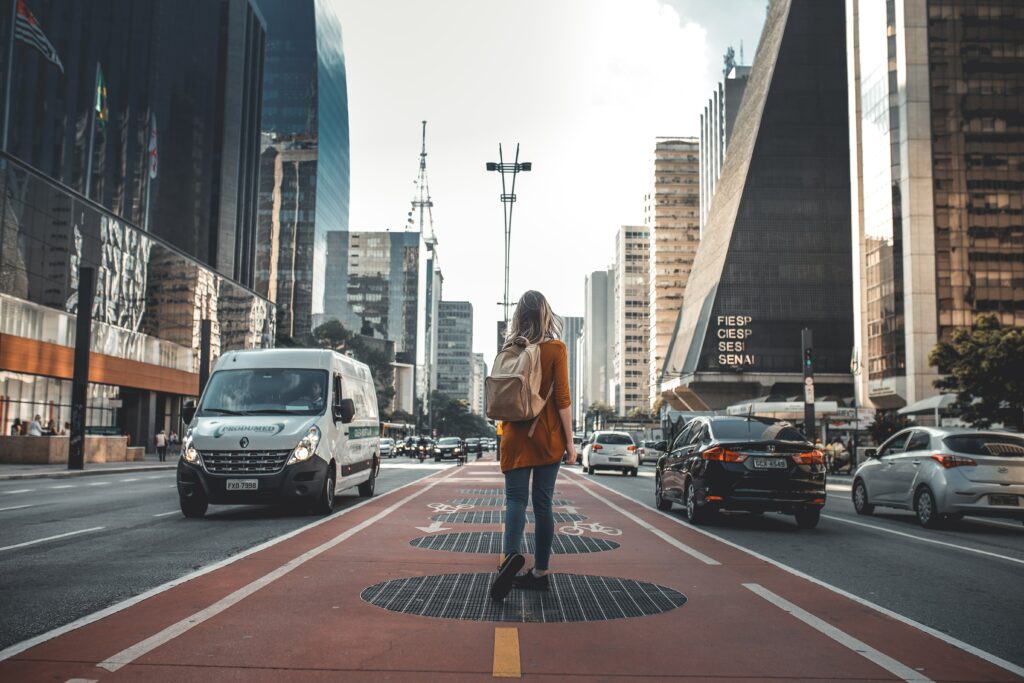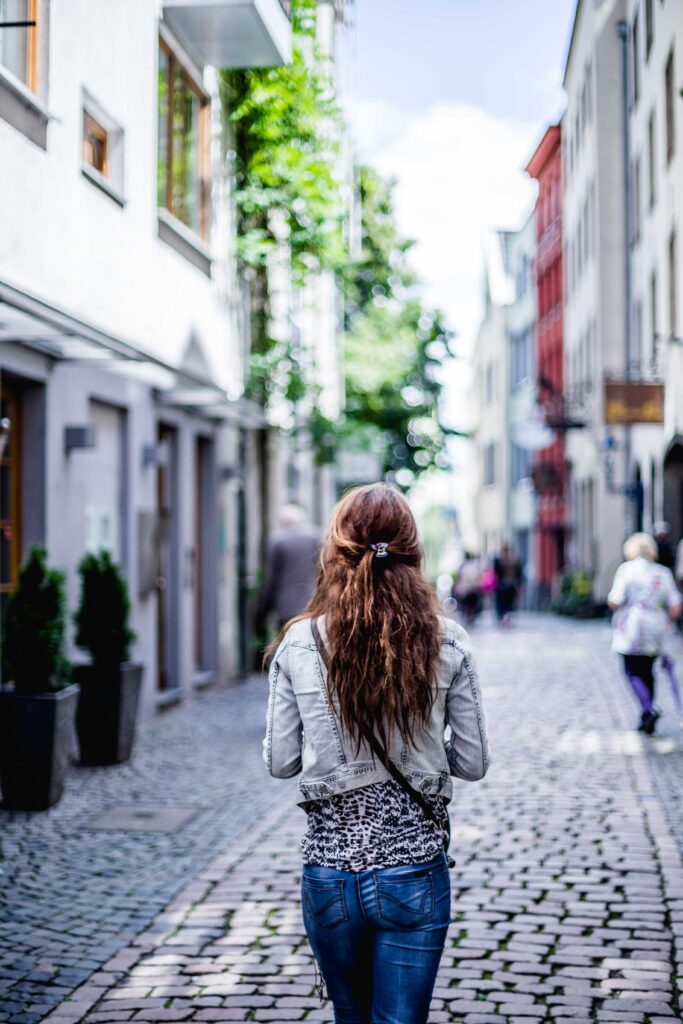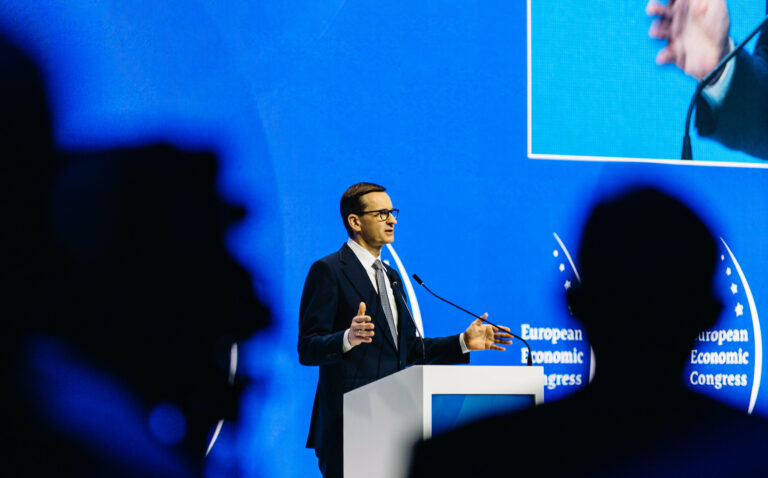
What does a Women-Friendly City mean?
The Article was prepared in the framework of “Likes for The Better” Project by Young European Ambassador in Georgia Mariam Morchadze and Wienke Döbbeling from Germany.
Do we want to live in a city where men and women can co-exist with equal ability to enjoy all the benefits coming from urban design and city planning agendas? Then we definitely need to talk about inclusiveness while talking about cities and the urban services provided for the city inhabitants.
Even if we compare the cases and the opinions of two experts from two different countries having different historic, cultural and political backgrounds with each other, then we might see a similar picture in terms of cities through a “gender lens”. In this article, let’s talk about Germany and Georgia – as most German and Georgian cities are planned by men, as a result, many conditions within a city do not suit the needs of women. They do not feel secure in the structure of their city or cannot fulfill their necessities.
But what are the concrete problems that women have and men do not? In order to establish gender equity, do we really need to address the concrete needs of women, or do we then treat them separately and portray them as weak?
What is the role of motherhood in relation to the living space of the city? Does a city need to be adapted to mothers, or is it perhaps more progressive to treat parents as a common peer group.
We would like to explore these questions in two interviews with experts from Germany and Georgia and ask them what challenges gender equitable urban planning faces.

Interview with Lena Osswald
You studied International and European Governance and now work as a freelance consultant, speaker and activist. Among other things, you are the founder of the Mobilivers platform. What was your incentive to found the platform and what is it used for?
Among other things, I studied politics and I am interested in the topic of sustainability and climate protection. That’s how I got into the transport sector. I’ve been working in that sector for about six years now. I worked in a company that advised the Federal Ministry of Transport. In the process, I became aware of how male-dominated this sector still is. In participation rounds, there was a strong preponderance of male people and positions. That is a big problem. Now there is definitely a discourse on this in recent years. It is seen as a solution to put more women on the podiums. I don’t see that as a final solution, because although I think it’s good to see a woman on the podium, diversity cannot be fulfilled by only one female person and this one woman will not automatically be able to cover all positions of feminist transport policy.
Our platform Mobilivers is conditioned by the idea of presenting people who deal with mobility justice. The platform has a focus on gender-equitable mobility demands, but with the claim of intersectionality. One example is dark tunnels in a city. These trigger a feeling of fear for many women, but at the same time cause uncertainty for many older people, regardless of gender. The focus of our platform is to include the diversity of mobility needs and experiences in traffic and mobility planning. On the one hand, this is done by introducing people who can contribute to the topic. On the other hand, the platform offers us an internal space where we can exchange ideas. There we discuss questions like: How do we talk about mobility? What should participation formats look like? How do we ensure that the mobility debate is not just a climate debate, but that the issue of social justice is also discussed?
Diversity is at the focus of the platform. Is there a focus on a specific disadvantaged group? What is the role of women-friendly urban planning?
We use the issue of gender justice as a lens to look at the issue of mobility. It is also a starting point for us to look at other levels as well. Our platform does not exist that long, so we can’t cover all the topics yet. In the future, I hope that more people will join us, who will make us aware of our blind spots and help us to grasp the breadth of injustice in relation to mobility and transport. With the platform, we offer the space to bring together experts from different fields to conduct debates that have not yet been conducted in this form. For me, the topic of gender is the origin of the debate and of the platform.
On the website of the United Nations, there is a definition of women-friendly cities, according to which women-friendly cities are cities in which women
– Have access to health, education and social services.
– Have access to employment opportunities.
– Have access to quality and comprehensive urban services (such as transport, housing and security).
– Have access to mechanisms that guarantee their rights when they are exposed to violence.
Are Cities in which:
– Local governments consider women’s concerns and perspectives in their planning and decision-making processes.
– Women are supported and encouraged to participate on an equal footing with men in all aspects of urban life.
– In essence, women-friendly cities are those in which all residents of the respective city can benefit equally from the financial, social and political opportunities available to them.
Would you support this definition or do you define women-friendly cities differently?
I would add the equal use of public space as a focus. This goes hand in hand with the care work that continues to be carried out predominantly by women. Regardless of how an individual family is structured, it is still the case that women currently take on the majority of childcare and care for older family members. As a result, they move around the city differently and require different infrastructure. An example of this is seating for older people. When it comes to mobility with children, public sanitary facilities are a key issue. The existing public toilets do not always have wide enough doors so that a mother with a stroller can get in to change her child. Municipal infrastructures are needed that support women in their daily routines and do not restrict them.
Another point is the feeling of safety in public spaces. In my view, coexistence on an equal footing is given when all people feel safe and can therefore move around in public space without hesitation. For me, the question is how this can be achieved without installing cameras everywhere. Because from my point of view, they are not the solution.
What do you think would be a solution?
Lighting and visibility are common solutions. In the case of subways, one remedy is that the end of the subway is visible and it doesn’t go around a corner. In Barcelona, more benches have been placed in public places. This leads to more people being there, making streets less lonely and subjectively safer as a result.
In the debate on women-friendly cities, nappy-changing in public spaces is also often mentioned. We wondered whether factors such as changing nappies or going to the supermarket, children’s sports club, etc. should be central to the debate on women-friendly cities, or whether it can lead to legitimising the fact that much of the care work is still done by women. Wouldn’t it be more purposeful to talk about family-friendly cities?
In our discussion paper “Thinking of everyone?! Women, Gender, Mobility – How do we move from debate to implementation?” My co-author Ann-Kathrin Bersch and I propose to use the term of user-friendly planning to consider needs regardless of gender. At the same time, sometimes it helps to break down an issue in a public debate. Because we know that care work in Germany is largely done by women, it is currently an acute problem for women, and I don’t think we should neglect that in the sense of utopia.
With regard to the definition, would you say that the actors who work for a gender-equitable cityscape also agree on what measures are needed?
For the field of urban planning, I can’t make a definite statement about this. My feeling is that there is no big debate, but that we know quite well what needs to be done.
How interdisciplinary is the work in the field of gender-equitable transport change? Do urban planners work together with gender researchers, for example, or is networking still very limited?
Interdisciplinarity is an important lever to really change something, which is still missing in many places. As far as I know, there is hardly any discourse between the disciplines. In transport planning, i.e. the engineering sciences, needs-oriented mobility is hardly discussed and is not part of the curriculum. At the same time, gender studies are very discourse-oriented, so that the direct reference to the execution of urban planning is missing.
Furthermore, there are hardly any interdisciplinary committees between science and administration that exchange ideas on how to implement new scientific findings in administrative regulations.
What role does local government play in creating a gender-equitable city? What feedback do you encounter?
There are still very few projects that concretely implement gender-sensitive mobility. I have already met planners who feel that the topic is important. However, they often lack the knowledge to really include the relevance of the topic in their planning. In addition, no resources are provided to review the planning in terms of gender equality or to involve citizens in the planning process.
What major mistakes do urban planners who are not yet sensitised to the topic make in their work?
I think many planners are already doing a very good job. However, it is also relevant how the planned conditions are used. For example, a lowered kerb cannot be used by a stroller driver if it is constantly parked over. I see a central weakness in the fact that many urban planners are, in my opinion, not aware of their power. For example, having a bench in the street can have a central impact on a person’s quality of life. A person with poor health sometimes only dares to step outside the door because of this factor.
Is there anything that non-professional women and men can do to help in everyday life?
One possibility is neighbourhood initiatives. In Berlin, for example, there are the Kiezblock initiatives, which are inspired by the Superblocks in Barcelona, which campaigned for traffic calming. A first step is also to move with open eyes and not to see the restrictive urban conditions as normal. If one trains this awareness, one will talk about it in the next step and subsequently be more likely to participate in a participation event.
I would also like to add one point that concerns me in the debate. In the focus of politics and thus also of the distribution of funds, there is currently a lot of talk about topics such as autonomous driving or flying taxis. The focus is very much on investment and economic factors. I see an imbalance here, because the well-being of city dwellers is not in the foreground. Such money could alternatively be invested in urban planning that makes the city a more pleasant place to live for women and children.

Interview with Ana Bibilashvili
You have studied urbanism and now work as an architect and urban planner. What is more, you are an independent consultant, speaker and activist. Among other things you are interested in topics such as inclusive mobility, public spaces, green spaces, etc. From your point of view, what exactly might a women-friendly city term mean?
First of all, it means inclusiveness, which is manifested in all parts, and the possibility of development, movement or success. Accordingly, in a word, it implies equality, in this case. A proper understanding of this term is the development of a city based on the principles of equality, which gives women the opportunity to develop and succeed just as much as men.
There are several indicators acknowledged which the women-friendly city is defined by according of which the feminist city is a city where women:
In General
- Can access health, education and social services;
- Can access employment opportunities;
- Can access high quality and comprehensive urban services (such as transportation, accommodation and security);
- Can access mechanisms that will guarantee their rights in the event they are subjected to violence;
In Particular
- Can access safety when it comes to breastfeeding in public spaces;
- Have access to changing baby diapers in public spaces;
- Can access security when it comes to urban crime.
Do you agree with this? If so: But if we look at the factor of childcare, this should not be a female problem in the future but a problem of both parents, whether male or female. Only a mother will need a quiet place to breastfeed, that is indisputable, but how do you see the question of changing diapers?
Some indicators, obviously, are more natural and correctly fit the definition of components of women-friendly cities, however, some of them go more into stereotypes. If we rely on surveys to determine the extent to which women in the city themselves share an environment tailored to their needs, then indicators such as hygiene or stroller issues often emerge. On the one hand, it may be stereotypical to discuss this in terms of gender, but if we rely on the survey, cities are not what researchers believe, but what people in the city feel and recognize. Consequently, we cannot exclude these components – this is how we should view this scenario. That is why, in fact, almost all the components are listed, which is the most important. I would also like to add that the often mentioned factor is the problem of strolling in the city, which is clearly manifested as a component in Georgian cities. Also, access to appropriate recreational or children’s playgrounds.
So even the small section of female city planners, who advocate gender-appropriate urban planning, do not agree on the necessary goals?
As I said, it is not entirely right to consider these components in the context of women-friendly cities, but that is how women residents view them and therefore we cannot ignore these indicators as well as safety issues – for example. If we take statistically the cities with the status of women-friendly cities, one of the most important components will be security – the ability to move around at night, that is, the ability to move safely at night alone for women, therefore, we cannot consider this uniquely for both sexes, and we need to focus more on the female component.
What we want in the ideal case is not even reality, but reality is how people live now and we need to get out of this reality and these needs. The main thing is not to fight stereotypes, in this case, the main thing is that people feel safe and secure in the city and then come the other components already.
Do you work interdisciplinary with gender researchers?
No, I do not work with separate genre researchers. In the main case, when we do projects in any urban context, and most often in the direction of citizen involvement, that is, in terms of participatory planning, then we pay a lot of attention to how active women are in the decision-making process when they are given that opportunity, and I want to tell you that 75% actually come from women in the decision-making process if we give them that opportunity. Especially when it comes to the creation of open public spaces, parks, squares, which are more often used by women and children and, consequently, the gender of the consumers, i.e. the proportion is distributed approximately as well as the interest is distributed or more. Therefore, in this regard, we try our best to make women active in the decision-making process and urban planning in the city and to better see their role.
What feedback do you encounter from the city administration?
We encounter less resistance because of gender stereotypes, however, this does not mean that it does not exist. It’s just that when a particular project is being prepared, it can be just trust in the experts and therefore the organizations involved, rarely, in fact, do I even remember a case where we encountered any resistance due to stereotypes – try as much as possible to ensure that this balance is maintained. When you open the door to women’s involvement, there is a huge demand for interest. I can say for sure that women have high social responsibilities and are in great need of making decisions in the long run regarding the development of their space.
What is the role of local government in creating a gender-equal city?
Huge – and yet, I think this is more of a participatory part, which means properly asking the consumers, what obstacles they face or, how they see themselves overcoming these obstacles and challenges. Because, ultimately the city government and decision makers including people working on urban planning and myself, cannot cover all the components and there may still be something that cannot be considered and only the user of the space and the area is fully aware of the needs and the challenges. Every place and every space has its own unique imprint that suggests what to do. Part of this imprint is the people who live here. In some cases, this may be a component of stray animals, it may be street lighting and accessibility, and so on. Lots of different components. You cannot take everything into account when planning a single space, obviously. You cannot insert all components. Therefore, the best option is for City Hall and decision makers, and then already the lower echelons, i.e. executors and urban planners, often ask customers what they need when planning and never to miss the involvement of women. Women put more emphasis on children, grandchildren, and so on. Consequently, their involvement guarantees decision-makers that these spaces will be inclusive and tailored to all genders and focused on women, security in the first place, which is very often and more emphasized by women, so one of the best solutions is to ensure engagement.
What major mistakes do the urban planners make while working on urban planning and what are the main barriers faced by women in German/Georgian cities today?
The main mistake is that they make very subjective decisions, which is natural that if no citizen is asked at the moment of decision making, regardless of the knowledge of urban planners, no matter how large, it cannot be perfect. Therefore, when working on planning in a bad case, it is up to the individual to make decisions, often unfortunately this often comes at the request of the local government. However, changes are needed in both circles at the same time – only urban planners cannot change or only local government. Both rings need to work together to eliminate this failure, and the world has shifted to working with this model when decision-makers are asking the most important individuals, consumers, about the decision.
As for the barriers, they are colossal. Here, too, we have to discuss in stereotypical terms, but the fact is that in the main case, women face problems in bringing children to different public spaces – we face serious problems with strolling, which is sometimes complicated even in public transport.
When we talk about mobility, in this regard, for women, moving around with a child or a small child is almost the most difficult and sometimes even impossible. Given that, for example, in the case of Tbilisi, recreational public spaces are far from residential, this is also a serious problem of accessibility.
In terms of child feeding, this infrastructure does not exist either in Tbilisi or in other cities of Georgia. The parent has to do this on the street because it is mainly the mother who has the responsibility to raise the child, and if not the mother, then the nannies, who are also mostly women. These components are mainly related to children and their movement, however, we know that women in Georgian cities are no longer protected by walking alone, in places where it is not crowded, it is not safe for women to move, so there is a significant failure in this component and we cannot imagine Cities friendly to women.
Do you think that when a particular issue concerns a child, if we remove it from the components of a women-friendly city and perceive it as a separate child-friendly city indicator, would it be more accurate?
Yes, it will be more accurate. Due to the fact that stereotypes, in my opinion, apply equally to everyone, both children and adults. It affects children more, obviously, because they have no ability to make decisions or protest, and it is precisely from a young age that these stereotypes eventually emerge, including from city management. Playgrounds, for example, are mostly sports fields created in neighborhoods and we have a lot of such cases, while there is less inclusive planning, which is more in different spaces. In that space, the generation raised in that environment grows with these stereotypical notions – girls get the feeling that their place is not in public spaces, while men do the same and this separation or starts from the beginning and is probably most actively manifested there when the use of public spaces is dominated by the needs of men. Therefore, it is very important that decisions are made in this area.
Taking all the main points mentioned in both interviews into consideration, we can conclude that when it comes to defining the women-friendly cities we must talk about their needs and feelings and become focused on them as important indicators rather than ignoring such components which might be perceived stereotypically at some point in a society. City planning based on women’s needs will finally be a more user-friendly city with gender-inclusive design which works for all.
LATEST

How you can help the planet every day

Building Europe: Poland’s experience of joining the European Union and lessons for Ukraine

World Health Day 2024: My Health, My Right

EUREKA MEETS EUROPE – opportunities to develop and study. My experience

Can you wear pink in the workplace?
More campaign pages:
Interested in the latest news and opportunities?
This website is managed by the EU-funded Regional Communication Programme for the Eastern Neighbourhood ('EU NEIGHBOURS east’), which complements and supports the communication of the Delegations of the European Union in the Eastern partner countries, and works under the guidance of the European Commission’s Directorate-General for Neighbourhood Policy and Enlargement Negotiations, and the European External Action Service. EU NEIGHBOURS east is implemented by a GOPA PACE-led consortium. It is part of the larger Neighbourhood Communication Programme (2020-2024) for the EU's Eastern and Southern Neighbourhood, which also includes 'EU NEIGHBOURS south’ project that runs the EU Neighbours portal.

The information on this site is subject to a Disclaimer and Protection of personal data. © European Union,